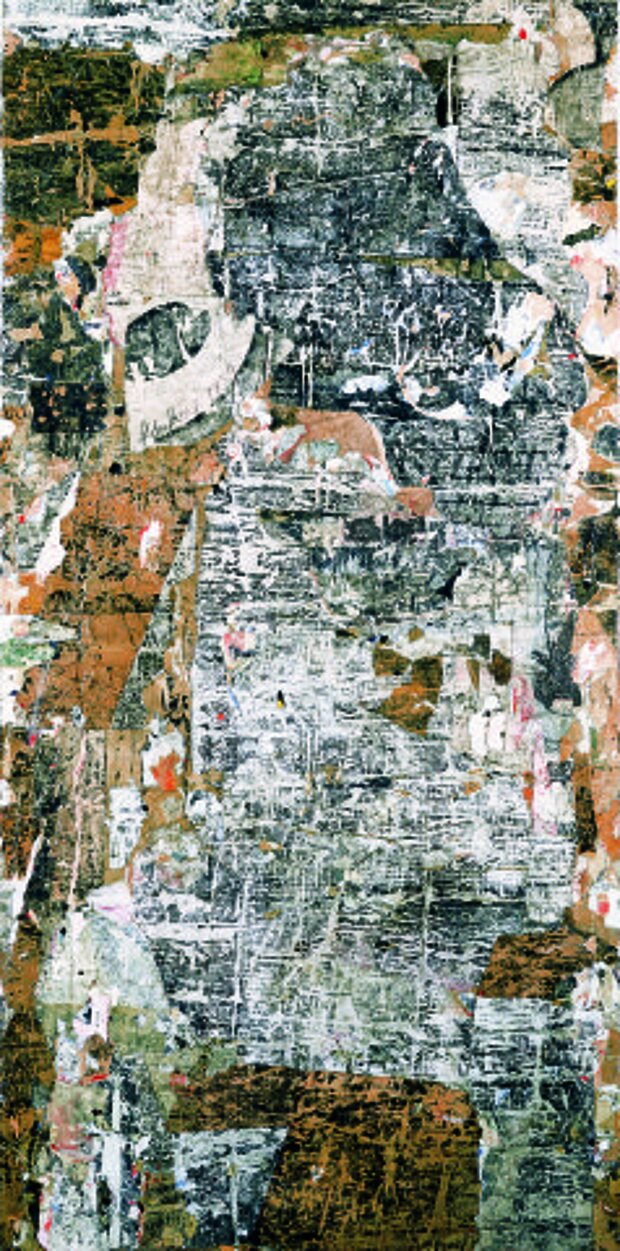
Dufrêne, François
Un Quart du plafond de la 1e Biennale des Jeunes de Paris
1959

© mumok
| Object description | Poster fragments, mounted on canvas |
|---|---|
| Dimensions |
Objektmaß:
height: 195 cm,
width: 97 cm,
depth: 2 cm
Rahmenmaß:
height: 216 cm,
width: 118 cm,
depth: 6 cm
|
| Year of acquisition | 1978 |
| Inventory number | B 410/0 |
| Creditline | mumok - Museum moderner Kunst Stiftung Ludwig Wien, ehemals Sammlung Hahn, Köln |
| Rights reference | Bildrecht, Wien |
| Further information about the person | Dufrêne, François [GND] |
| Literature |
Nouveau Réalisme. Schwerpunkte der Sammlung museum moderner kunst.SAMMLUNG HAHN Francois Dufrêne LE NOUVE AU REAL ISME New Realisms : 1957 - 1962 : Object Strategies Between Readymade and Spectacle [ ... accompanying an exhibition opening at the Museo Nacional Centro Arte Reina Sofia in Madrid in the spring of 2010] |
Francois Dufrêne worked as a painter, object artist, poet, and singer. He was a founding member of Nouveau Réalisme and founder of ‘poèsie sonore’ (sound poetry). Dufrêne’s visual artworks consist of pictures of the backs of poster hoardings while his colleagues Raymond Hains, Jacques de la Villeglé, and Mimmo Rotella concerned themselves with the front. As with other members of the New Realists, Dufrêne tried to integrate the reality of everyday life into his art. The first biennale of young artists was held in 1959 in Paris and it was the first time that the "Affichistes" (poster tearers) were represented on such a scale. Dufrêne provided the ceiling of the exhibition room. You can see one quarter of that work, which was shown in the Salle d’Informel, in front of you now. Dufrêne described his procedure thus: “I became ecstatic in front of a pretty big billboard on which a poster in black, grey, and white was showing through as a negative print. I tore smaller pictures out of the whole complex that looked devilishly Japanese.” These obverse of posters that the artist scratches and cuts his way through, uncovering things layer by layer, are then mounted on canvas. Dufrêne selects his "Dessous d’affiches" on the basis of aesthetics: his first concern is not what the poster says, but the nuances of colour and its tonalities, the way the resulting "picture" looks.
© mumok – museum moderner kunst stiftung ludwig wien